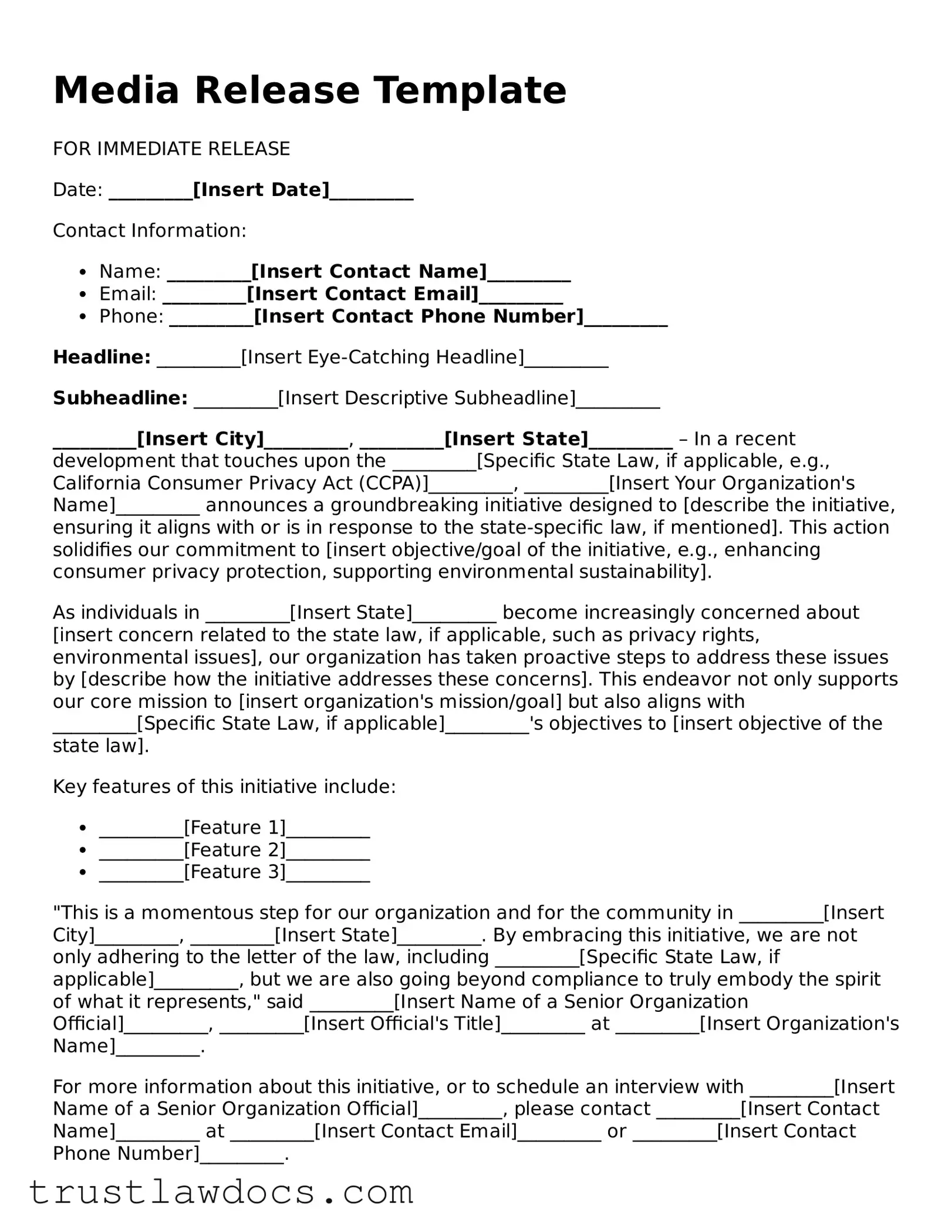Media Release Template
FOR IMMEDIATE RELEASE
Date: _________[Insert Date]_________
Contact Information:
- Name: _________[Insert Contact Name]_________
- Email: _________[Insert Contact Email]_________
- Phone: _________[Insert Contact Phone Number]_________
Headline: _________[Insert Eye-Catching Headline]_________
Subheadline: _________[Insert Descriptive Subheadline]_________
_________[Insert City]_________, _________[Insert State]_________ – In a recent development that touches upon the _________[Specific State Law, if applicable, e.g., California Consumer Privacy Act (CCPA)]_________, _________[Insert Your Organization's Name]_________ announces a groundbreaking initiative designed to [describe the initiative, ensuring it aligns with or is in response to the state-specific law, if mentioned]. This action solidifies our commitment to [insert objective/goal of the initiative, e.g., enhancing consumer privacy protection, supporting environmental sustainability].
As individuals in _________[Insert State]_________ become increasingly concerned about [insert concern related to the state law, if applicable, such as privacy rights, environmental issues], our organization has taken proactive steps to address these issues by [describe how the initiative addresses these concerns]. This endeavor not only supports our core mission to [insert organization's mission/goal] but also aligns with _________[Specific State Law, if applicable]_________'s objectives to [insert objective of the state law].
Key features of this initiative include:
- _________[Feature 1]_________
- _________[Feature 2]_________
- _________[Feature 3]_________
"This is a momentous step for our organization and for the community in _________[Insert City]_________, _________[Insert State]_________. By embracing this initiative, we are not only adhering to the letter of the law, including _________[Specific State Law, if applicable]_________, but we are also going beyond compliance to truly embody the spirit of what it represents," said _________[Insert Name of a Senior Organization Official]_________, _________[Insert Official's Title]_________ at _________[Insert Organization's Name]_________.
For more information about this initiative, or to schedule an interview with _________[Insert Name of a Senior Organization Official]_________, please contact _________[Insert Contact Name]_________ at _________[Insert Contact Email]_________ or _________[Insert Contact Phone Number]_________.
_________[Insert Organization's Name]_________ is committed to [insert commitment, e.g., serving the community, enhancing consumer protection, fostering innovation]. With operations in _________[Insert Location(s) of Operation]_________ and a dedicated team of [insert number of employees, volunteers, etc.], we consistently strive to contribute positively to our community and to the wider industry of _________[Insert Industry]_________.
To learn more about _________[Insert Organization's Name]_________ and its initiatives, visit [Insert Website].
